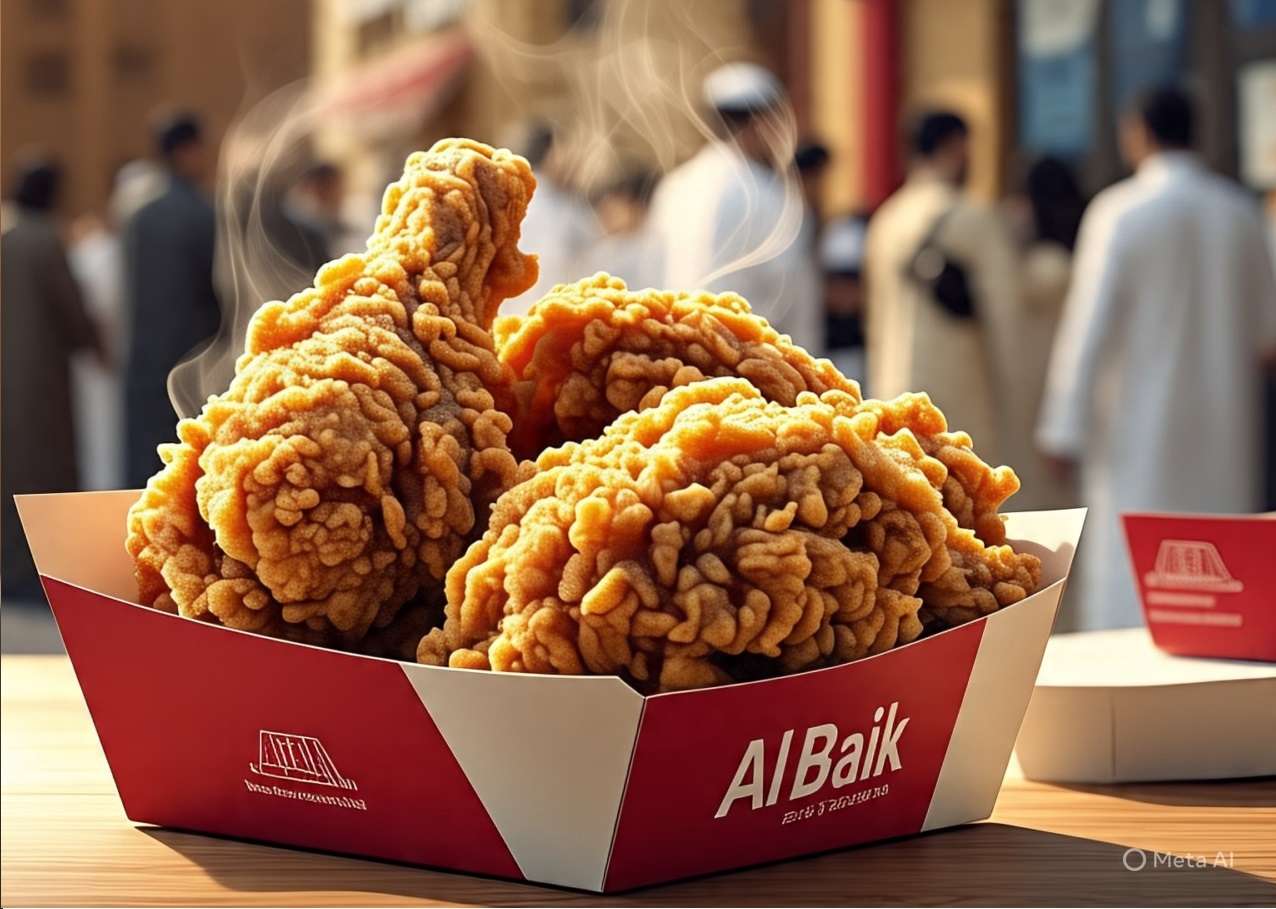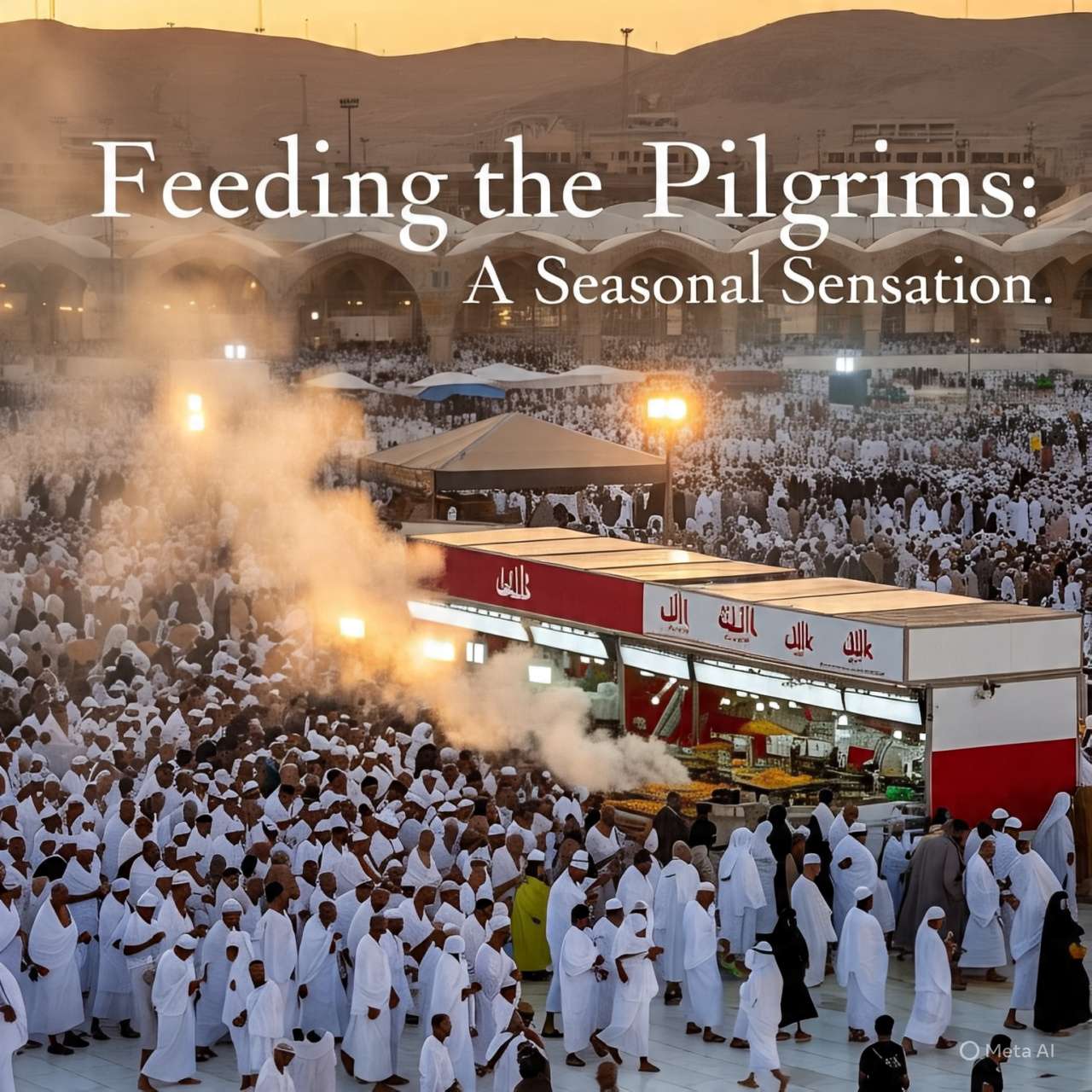- 8 July 2025
- No Comment
- 1207
The Hidden Story Behind Saudi Fried Chicken Empire: Al Baik

A single piece of fried chicken, crispy on the outside, juicy on the inside, could spark hour-long lines, cross-country road trips, and even international cravings? Sounds like something out of a food-lover’s dream, right?
Well, it’s not just a dream, it’s a global obsession.
Fried chicken isn’t just comfort food anymore. It’s big business. In 2024 alone, the fried chicken industry was sizzling at a staggering $44.56 billion globally, and it’s only expected to get juicier, projected to reach a whopping $78.92 billion by 2035. According to reports, global chicken meat production topped 141 million metric tons in 2024.
And let’s not forget the nutritional punch packed into every crispy bite: 240 calories, 15g of fat, and a mighty 29g of protein per 100g serving. No wonder millions around the world are hooked – it’s a flavor explosion that’s hard to resist!
But among all the global giants and fast-food chains, one brand stands out not just for its taste, but for the emotions it stirs, the cultural pride it fuels, and the lines that wrap around city blocks. Welcome to the world of Al Baik, Saudi Arabia’s most loved, most legendary, and most talked-about fast food chain.
This isn’t just a story about chicken. It’s about survival, identity, and how one humble family recipe grew into a movement. Let’s dig into the flavorful journey of Al Baik, the chicken that conquered hearts, one spicy bite at a time.
A Humble Beginning: From Refugee to Entrepreneur
In 1948, when the upheaval known as the Nakba forced over 750,000 Palestinians to flee their homeland, a 20‑year‑old Shakour Abu Ghazalah was among them. He landed in Saudi Arabia, took up work at Aramco, and eventually became a Saudi citizen. Fifteen years later, armed with both savings and a strong work ethic, Shakour moved on to Lebanon hoping to build a new future.
Hitting Rock Bottom—and Bouncing Back
By 1965, Shakour had scraped together a small nest egg, only to see it vanish when his bank collapsed. Many would have given up. Not Shakour. He returned to Jeddah, spotted a gap—there were virtually no fast‑food spots in town—and decided to invest every remaining riyal his family had into a little fried chicken shop. That was Al Baik’s birth in 1974: a converted warehouse on Airport Road, serving up juicy chicken with a French‑supplied spice blend and specialized cooking equipment.
The Turning Point—and Tragedy
Word spread quickly. People flocked from all over Jeddah to taste the new “broasted” chicken, part pressure‑cooked, part fried, to get that perfect crisp.
Just as the momentum was building, tragedy struck in 1976: Shakour passed away at only 48.
Two Brothers Rise to the Challenge
Left with mounting debts of nearly $1.8 million and two young sons—22‑year‑old Ihsan and 20‑year‑old Ramzy—Al Baik seemed doomed. Ihsan walked away from a promising civil engineering career (and even a pro‑basketball offer!), while Ramzy abandoned his studies in Tennessee. Together, they sold personal assets to clear the debt and dove into every task: cooking, serving, cleaning—you name it.
Standing Out: Beating the Copycats
Copycats on Every Corner
By the early ’80s, Jeddah had sprouted over 400 fast‑food joints, many shamelessly imitating Al Baik’s branding and menu. The brothers took the legal route to protect their name, but Ihsan knew they also needed to upgrade the food itself.
Crafting the Secret Spice Mix
In 1984, Ihsan flew to Paris to study food technology. Two years later, after countless late‑night experiments in undisclosed kitchens, he emerged with an 18‑herb‑and‑spice formula that would become Al Baik’s secret weapon. Every evening, he and Ramzy prepared the blend in small batches, then hurried it to their central kitchen for mass production.
“Al Baik” Becomes “The Important One”
In 1986, they rechristened the restaurant “Al Baik”—a Turkish phrase meaning “the important one.” It was a bold declaration of quality, and it stuck. Suddenly, ordering Al Baik felt like treating yourself to something truly special, not just grabbing a quick bite.

Feeding the Pilgrims: A Seasonal Sensation
Hajj Season Service
Two years later, the Saudi government invited Al Baik to set up seasonal stalls in Mina during the Hajj pilgrimage. Suddenly, the brand was dishing out up to 250,000 meals a day—making one of those tent‑area joints arguably the busiest fast‑food outlet on Earth.
A Pilgrim Tradition
Word spread: finishing the pilgrimage and then biting into that perfectly spiced chicken became as much a spiritual reward as an earthly one. Al Baik trucks and stalls soon popped up in Medina, deepening the chain’s bond with Muslim travelers. For many, grabbing Al Baik after prayers became a pilgrimage tradition in its own right.
More Than Chicken: A Cultural Phenomenon
Lines That Never End
Walk past any Al Baik outlet in Riyadh, Dammam or Taif, and you’ll see people waiting in endless queues—some for two or three hours! Years ago, Riyadh had no Al Baik, so drivers would load up cars with chicken from Jeddah and re‑sell it at a hefty markup back home. Today, the lines themselves are a badge of honor: “I waited three hours, and it was worth every minute.”
International Chatter
Returning pilgrims raved about Al Baik’s unique flavor and told friends back home. Soon, chicken lovers in Pakistan, Indonesia and beyond were begging visitors to bring back boxes of the famous bird. Social media posts would show trays of Al Baik stacked next to mosque photos—proof that culinary passions know no borders.
Giving Back: Charity and Community
A Tradition of Generosity
From day one, Shakour believed in sharing success. Al Baik donates 1 riyal from every meal sold to charity—continuing a founder‑installed tradition.
Pandemic Efforts
When COVID‑19 lockdowns hit Saudi Arabia, Al Baik ramped up to donate 10,000 meals per day to families in need. It wasn’t just about chicken; it was about community care in hard times.
Spreading Its Wings: Expansion and the Future
National Growth
By the late 2010s, Al Baik branched out beyond the western provinces. Riyadh, Dammam and other cities welcomed new outlets, each launch met with the same frenzied crowds.
International Ambitions
In 2020, Al Baik scratched its first international itch with a Bahrain location. A year later, Dubai Mall added the brand to its food court, and during the 2022 FIFA World Cup, Al Baik’s mobile kitchens rolled into Qatar—introducing millions of soccer fans to its secret‑spiced magic.
Can Al Baik Conquer the West?
With a devoted following and booming reputation, the big question remains: will Al Baik venture into Europe or North America? If KFC can globalize by balancing local roots with new‑market tweaks, maybe Al Baik can, too. It’s one thing to have the world’s best chicken; it’s another to convince a new audience that a Saudi delight belongs on every corner.
Key Takeaways and What’s Next
- Dream Big, Even After Setbacks: When Shakour lost everything in Lebanon, he didn’t give up—he used that hardship to fuel a new venture.
- Protect and Perfect Your Product: Legal fights and a secret spice mix helped Al Baik stand out among 400 imitators.
- Serve People, Not Just Food: Seasonal Hajj stands and pandemic meal donations built deep bonds with communities.
- Think Globally, Act Locally: National and international expansion show that staying true to one’s roots can spark worldwide love.
Whether you’re counting down to a bite of Al Baik after Hajj or just daydreaming about that crispy crunch, remember: behind every great brand is a story of resilience, creativity and a sprinkle of secret spices. Next time you see a line stretching down the block, ask yourself—what’s the story behind your favorite comfort food? And if you haven’t tried Al Baik yet, maybe it’s time to join the queue.
